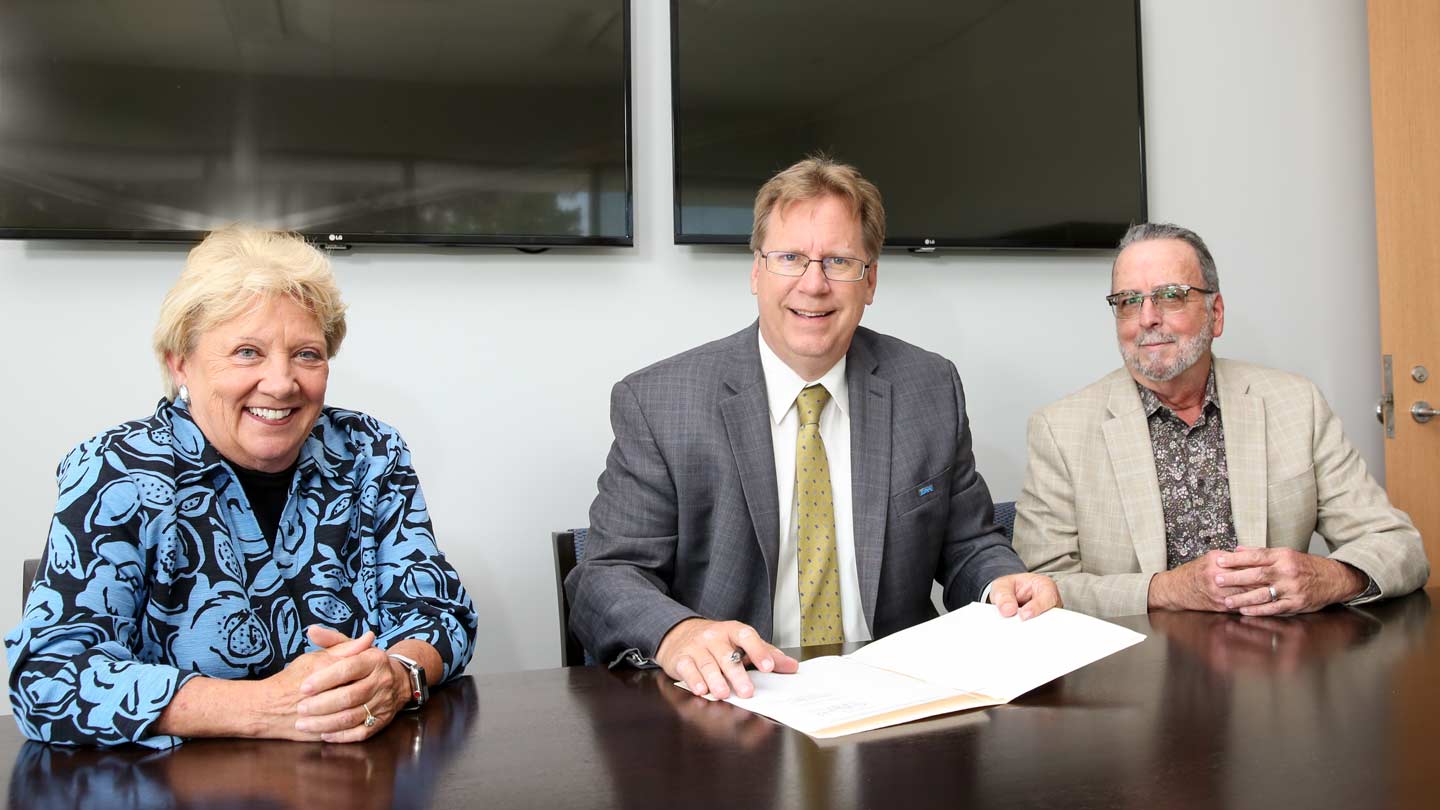
From left, UAH’s Dr. Virginia (Suzy) Young, director of the Office for Proposal Development, Dr. Robert Lindquist, interim vice president of research and economic development and Larry Smith, CCDC AvMC Small Business Innovation Research program coordinator, at UAH’s MOU signing.
Michael Mercier | UAH
The University of Alabama in Huntsville (UAH) has entered into a memorandum of understanding (MOU) to collaborate on aerospace projects with Wichita State University (WSU).
The arrangement offers aerospace expertise from WSU in the area of fixed wing commercial and civil aircraft and from UAH in the area of rotary wing military aircraft. The agreement also involves new business accelerators and incubators at both universities to facilitate the transfer of technology between government and academia, industry and federal laboratories and the ultimate commercialization of these technologies.
"Wichita and Huntsville both have long and successful histories in aerospace development and research, so the MOU between WSU and UAH is a natural partnership of complementary expertise," says Dr. Robert Lindquist, UAH interim vice president for research and economic development.
The MOU envisions further efforts between UAH and WSU that will include mutually beneficial research initiatives and faculty and student exchanges.
The MOU follows a partnership intermediary agreement (PIA) awarded from the U.S. Army Combat Capabilities Development Command Aviation and Missile (CCDC AvMC), formerly known as the Aviation and Missile Research, Development and Engineering Center (AMRDEC), with WSU.
"UAH is excited to team with WSU to better serve the needs of CCDC AvMC and the greater aerospace community," Dr. Lindquist says.
The WSU PIA allows facilitation of cooperative activities, like workshops, to collaborate with educational institutions, academic researchers and industry partners. A partnership with UAH offers a longstanding relationship that UAH has had with the Army and other local government entities.
The overall objectives of the PIA and the common goals of both universities include:
- Collaboration and partnering: the development and growth of environments necessary for fostering innovation and collaboration for the current and future technology challenges with Army areas of interest;
- Technology transfer and transition: engagement and collaboration with various centers of excellence in identifying, transferring, developing and transitioning new techniques and methodologies between small businesses and U.S. Army stakeholders;
Innovation; evolving and refining processes, resources and avenues for collaboration, innovation and technology development of advanced technologies, systems and operational concepts.